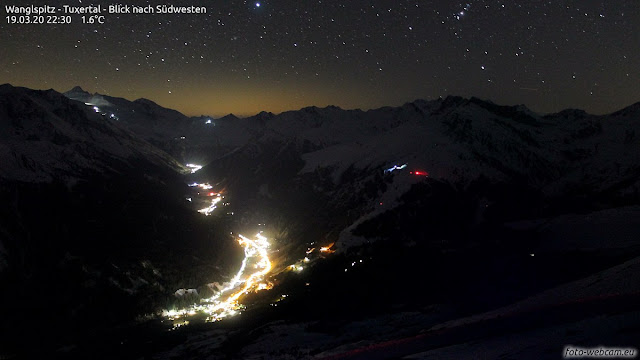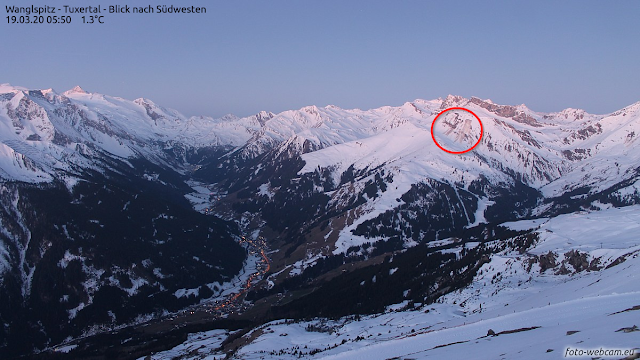Springtime conditions go on...for a bit
Last week was marked by classic springtime conditions, including a slight daytime avalanche danger cycle. In the morning mostly low, in the afternoons mostly moderate danger.
 |
| Conditions improve on Friday afternoon, 13.03. Northern Stubai Alps |
 |
| Star-studded nighttime skies and dry air stabilize the snowpack which softened superficially the day before |
Avalanche activity is limited. The main danger stems from isolated glide-snow avalanches on steep grass-covered slopes.
 |
| Glide-snow avalanches caught by foto-webcam.eu |
 |
| Glide-snow avalanche and glide cracks in northern Stubai Alps (photo: 15.03.2020) |
Caution: cornices continue to break...
 |
| ...such as here in Boden, Ausserfern (photo: 18.03.2020) |
Decisive: continuing moistness/wetness of the snowpack
The assessment of avalanche dangers is currently based on only a few snow profiles. What matters most: snow temperature.
 |
| Isotherm snowpack, SE aspect at 2020 m, 26°, on 14.03.2020, northern Stubai Alps |
 |
| Temperature reserves, NE aspect at 2540 m, 36°, Gurgl Group on 15.03.2020 |
 |
| Also currently indicative: frequent sequences of melt-freeze crusts on sunny slopes. Inside the snowpack, frozen meltwater canals are often evident. |
Parallel to this, a simulation program called SNOWPACK also provides deeper understanding. With it we can better evaluate the extent of snowpack moistness/wetness and loss of snowpack firmness.
The quintessence: a marked wet-snow avalanche cycle is not currently expected, particularly due to the repeated times throughout the winter when the snowpack became thoroughly wet.
As of 21 March, a cold front: temperatures will drop, temporarily end springtime conditions
On Saturday (21.03) a weak cold front will bring a small amount of fresh snow. Temperatures will remain down. Wet-snow avalanches are thus unlikely for a time. In accordance with the juncture of the season, caution will then be necessary towards diffuse light conditions and loose-snow avalanches. In addition, isolated glide-snow avalanches continue to be possible.


